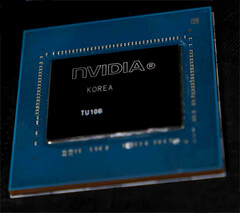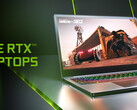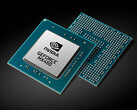Nvidia lifted the covers off the GeForce RTX 2050, MX550 and MX570 yesterday (December 17, 2021). The announcement came as a bit of surprise, given that Nvidia has plans to unveil a host of graphics cards at CES 2022, including the GeForce RTX 3050, RTX 3050 Ti, and RTX 3090 Ti at CES 2022. The GeForce RTX 2050 is the most puzzling SKU of the lot for several reasons.
Although its 2xxx series moniker suggests that the GeForce RTX 2050 is a part of the Turing family, Nvidia has confirmed to Anandtech (and several others) that it is actually an Ampere part using a GA107 GPU; the same one found on the GeForce RTX 3050. However, it supports none of Ampere's features, such as Resizable Bar, Nvidia Reflex, Shadowplay, etc., making it an amalgamation of the worst bits of Turing and Ampere.
The GeForce RTX 2050's spec sheet makes things even gloomier. Its packs 4GB of 14Gbps VRAM on a 64-bit bus, giving us an effective memory bandwidth of 112GB/s. It has a TGP of 30-45W, base/boost clocks of 1,057/1,740MHz, and 2,048 CUDA cores. These specs put it between Turing-era GeForce GTX 1650 and GTX 1660 Ti, so one can't help but wonder why it was launched with an Ampere GPU. However, its worst spec by far is its 64-bit bus width. To put things in perspective, the last graphics card we saw with the spec was the Pascal-based GT 1030.
Technical specifications aside, the GeForce RTX 2050's name opens an entirely new can of worms for OEMs and consumers alike. Given that it is an RTX-branded part, end users will expect it to perform on par or better than the GTX 1660 Ti, and as discussed earlier, that is very unlikely to happen. To make matters worse, we found the better-specced GeForce RTX 3050's ray tracing capabilities to be nothing short of abysmal, so things are looking grim for the GeForce RTX 2050 even before it hits shelves.
We got some GeForce RTX 2050 benchmark figures and they look grim. In 3DMark Time Spy (1440p), it is just a smidgen over the GeForce GTX 1650 Ti and AMD Radeon RX 5300M. As expected, the GeForce RTX 1660 Ti and RTX 3050 blow it out of the water. We also get a glimpse at how the GeForce MX570 and MX 550 fare against their previous-generation counterparts. The former's performance is nothing short of impressive, but that is to be expected, given that it runs the same GA107 GPU found on the RTX 2050. The GeForce MX550, on the other hand, employs an older TU117 GPU.
One can't help but wonder just where the GeForce RTX 2050 sits in Nvidia's product stack. It could find niche applications in budget laptops with low-power Alder Lake-M/Rembrandt parts. However, the RTX 2050 runs the risk of being outshined by next-generation iGPUs, especially the rumoured RDNA2-based models from AMD. At the very least, OEMs can slap an "RTX-enabled graphics card" label on their spec sheets as a marketing tactic. Nonetheless, it's best to reserve judgment until the GeForce RTX 2050 hits shelves in Spring 2022, and we can't wait to see how it performs.
Buy the Acer Nitro 5 with an Ryzen 6 5600H and Nvidia GeForce RTX 3060 on Amazon









